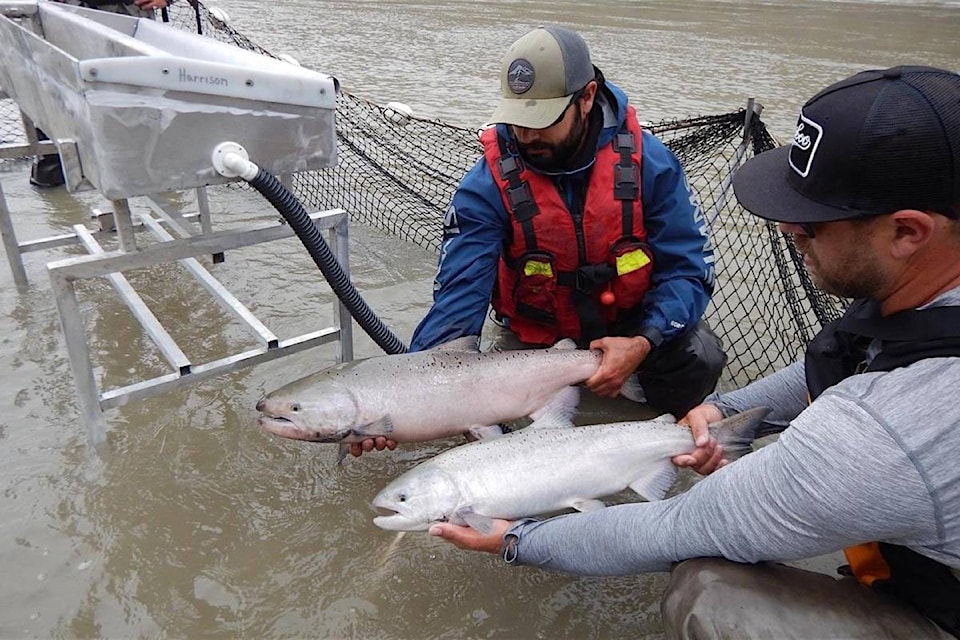After airlifting thousands of fish above a landslide in B.C.’s Fraser Canyon, fisheries biologists have begun capturing members of threatened salmon runs to raise their offspring in a hatchery.
In a pilot program that began this weekend, B.C. and federal experts captured and identified 177 Early Stuart sockeye, which begin and end their life cycle on the Stuart Lake system near Fort St. James in northwestern B.C. The captured fish have been taken to a Fisheries and Oceans Canada salmon research lab at Cultus Lake near Chilliwack for egg and sperm extraction and hatching.
A new generation of Early Stuart sockeye salmon #salmon will be reared at the lab from the eggs and milt of these fish. The purpose is to preserve a part of this year’s class of population. #BigBarLandslide pic.twitter.com/TJWOOvmbo0
— DFO Pacific (@DFO_Pacific) August 3, 2019
Transfer of salmon by helicopter upstream of the slide continues, while a team performs the delicate work of dismantling the rock deposit that created a five-metre waterfall across the crucial Fraser Canyon stretch north of Big Bar on June 23. The scaling crew is using hydraulic jacks and inflatable airbags to move large boulders in selected areas to create a natural fish passage on the edge of the fast-flowing river.
Controlled blasting was used July 22 to remove a large loose rock at the site that couldn’t be dislodged by the scaling crew with hand tools. As of Sunday, the joint federal-provincial emergency crew reports that 4,300 sockeye and Chinook have been transported above the slide site to continue their journey into the B.C. Interior.
Fishing restrictions on chinook salmon are in place, in some cases to preserve the largest fish that have the best chance of making it up-river past the blockage. Runs that come up the Fraser River include Interior Fraser steelhead (Chilcotin), Spring and Summer Chinook, Interior Fraser coho, Early Stuart sockeye, Early Summer sockeye, Summer Run sockeye and Fraser pink salmon.
RELATED: Chinook size limits aim to preserve larger salmon
VIDEO: Drone footage of the Big Bar landslide
The joint U.S.-Canada Fraser River Panel had its latest meeting Friday to assess data on Fraser River sockeye and pinks. Based on counts undertaken at Mission, the panel estimates that as of Friday, 38,000 sockeye reached the Big Bar site, of which 23,000 were Early Stuart sockeye.
A fish wheel has also been put in place to help fish pass the slide area, along with more than 2,300 sockeye and Chinook transported upstream by helicopter as of Aug. 1. The Big Bar slide adds to an already difficult year for salmon runs, particularly the commercially valuable sockeye.
“The migration of sockeye through both marine and Fraser River assessment areas has been very low to date, as indicated by the low sockeye catches in all areas,” the panel states in its weekly report. “In addition to abundances being very low, the migration timing seems much later than anticipated pre-season as well as in previous cycle years.”
All panel area waters on both sides of the international border remain closed to commercial salmon fishing, along with catch-and-release restrictions for recreational fishing off the B.C. coast.
@tomfletcherbc
tfletcher@blackpress.ca
Like us on Facebook and follow us on Twitter.
